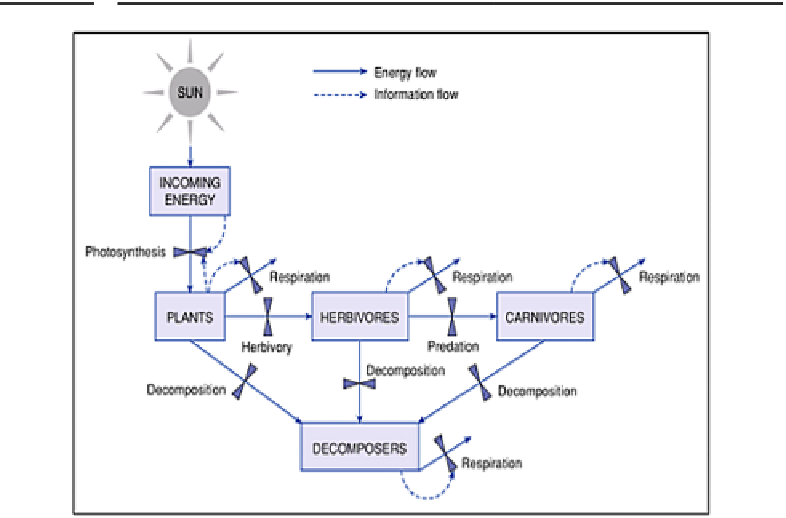Environmental Engineering Reference
In-Depth Information
3 Environmental gradients
Temperature, light, etc.
Function
1 Rate of energy flow
2 Rate of nutrient cycling
3
Regulation by the physical environment
Figure 22.1
The general model of the flow of energy through
different trophic levels in ecosystems.
comprising plants or vegetation at any one time is the
biomass
or
standing crop
. Thus
the energy flow of an ecosystem (E) can broadly be defined as :
where E = energy flow, GPP = gross primary productivity and R = plant respiration.
Figure 22.1 shows an energy flow model for any terrestrial ecosystem. Incoming solar
radiation is fixed by plants and passed on in turn to herbivores, carnivores and
decomposers (or detrivores). The transfer of energy between each component (box) in the
ecosystem to the next highest involves a loss of energy as heat, following the second law
of thermodynamics ('the change of state of energy involves degradation of some of it into
a lower state (heat)'). Thus
radiant energy
from the sun is converted by plant
photosynthesis into
potential energy
which when utilized by plants and animals is
dissipated as
heat energy
(Plate 22.1).
Figure 22.1 is a universal model of energy flow. In real ecosystems living organisms
are linked together by 'feed-ing' relationships or
trophic relationships
or
food chains



